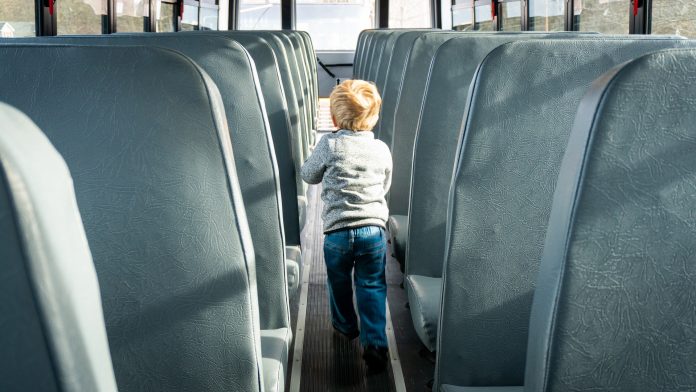A discussion among subject matter experts examined the effectiveness of various methods of cleaning the air inside a school bus for optimal student and driver protection from viruses and pollutants.
The Great Resignation is hitting the school bus industry hard, leaving it severely lacking drivers. One reason is due to low wages that do not outweigh the risks of COVID-19 exposure, said Clare Crosley, head of customer experience at AirLabs during a Wednesday webinar.
School bus drivers and student riders face a twofold problem onboard the enclosed vehicles: tailpipe emissions and road pollution as well as COVID-19 virus transmission through the air or via droplets, said Matthew Johnson, co-founder and chief science officer of AirLabs, who also serves as a professor of atmospheric chemistry at Copenhagen University.
Related: Illinois Moving With Big Leaps, Baby Steps Toward Zero Emissions Transportation
Related: Expectations Temper Despite Feds Funding Zero-, Low-Emissions School Buses
Related: EPA Announces $17M in Rebates for Zero, Low Emissions School Buses
Over 7 million deaths globally can be attributed to polluted air, which also leads to both short- and long-term effects on children’s health, Johnson noted. The smog that can often be seen on the Los Angeles skyline insidiously makes people more vulnerable to viruses and other sicknesses, he cautioned.
Johnson next debunked some myths about products and techniques typically used to clean a school bus. For instance, opening the windows on a school bus, he said, is an ineffective air purification substitute as it can let in cold air or even more polluted air. Cleaning or sanitizing seats and other surfaces is not sufficient, he added, as it neglects the airborne aspect of transmission. He explained that UV light filters are ineffective as a significant amount of time is required for their efficacy, while ionizers “are a bit of a gimmick” that aren’t enough to clean a large bus.
“You want to trap and immobilize the virus as close to the source as possible, before it’s able to mix within the air inside the vehicle.”
– Matthew Johnson, CSO & Co-Founder, AirLabs; Professor – Atmospheric Chemistry, Copenhagen University
Al Chami, AirLabs’ vice president of sales for North America, stressed that the company is science-based and focuses on protection rather than simply providing a perception of clean air. Its solution, the AirBubbl unit, uses a combination of three filters, two of which are proven solutions: HEPA filters and activated carbon filters. This removes 99-plus percent of pollutants and toxins. Importantly, the unit also recirculates the now-clean air inside the vehicle, he explained.
The compact size of the units, which are powered by micro-USBs, is also ideal for mounting along the sides of a school bus, noted STN Publisher Tony Corpin. Chami added that distributing the units throughout the bus creates clean air pockets, versus a centralized system that cannot clean the air quickly enough. It also makes sense from a cost standpoint since, if one goes down, the others continue to function.
Chami shared that the AirBubbl has undergone extensive testing and only needs the filter changed once per school year. It cycles the air onboard a bus every six minutes, well under the 15-minute requirement for coronavirus transmission according to the Centers for Disease Control and Prevention. Johnson shared that each unit makes 10,000 gallons of clean air per hour.
With the AirBubbl, a school bus is prepared for whatever enters its dynamic environment, said Chami. Drivers are not neglected but protected as well.
“You want to trap and immobilize the virus as close to the source as possible, before it’s able to mix within the air inside the vehicle,” Johnson commented. “That’s the strategy, to clean it at the source.”
Crosley reviewed positive customer reviews and increased performance, as well as fewer reported sick days.
“It’s small but mighty,” Chami said.
Related: STN EXPO Reno Panel Discusses Nuances of Air Purification on the School Bus
Related: Technology Considerations Abound for Cleaner Breathing Inside School Buses
Related: (STN Podcast E18) Local Solutions to a National Problem: Student Transporters Focus on Health & Safety
Corpin shared his experience with the AirBubbl, appreciating the status light indicator and the significant airflow circulation. He noted that although masks are coming off at schools, COVID-19 persists and some parents remain wary. Significantly, Elementary and Secondary School Emergency Relief funds still exist for cleaning and sanitization products such as this, Chami pointed out.
Most buses should use between eight and 10 AirBubbl units, with small buses requiring four, Chami said. They can be wired to come on when the bus does, or they can all be activated by a single switch. Installation is simple and can be done by district staff, Chami concluded.














